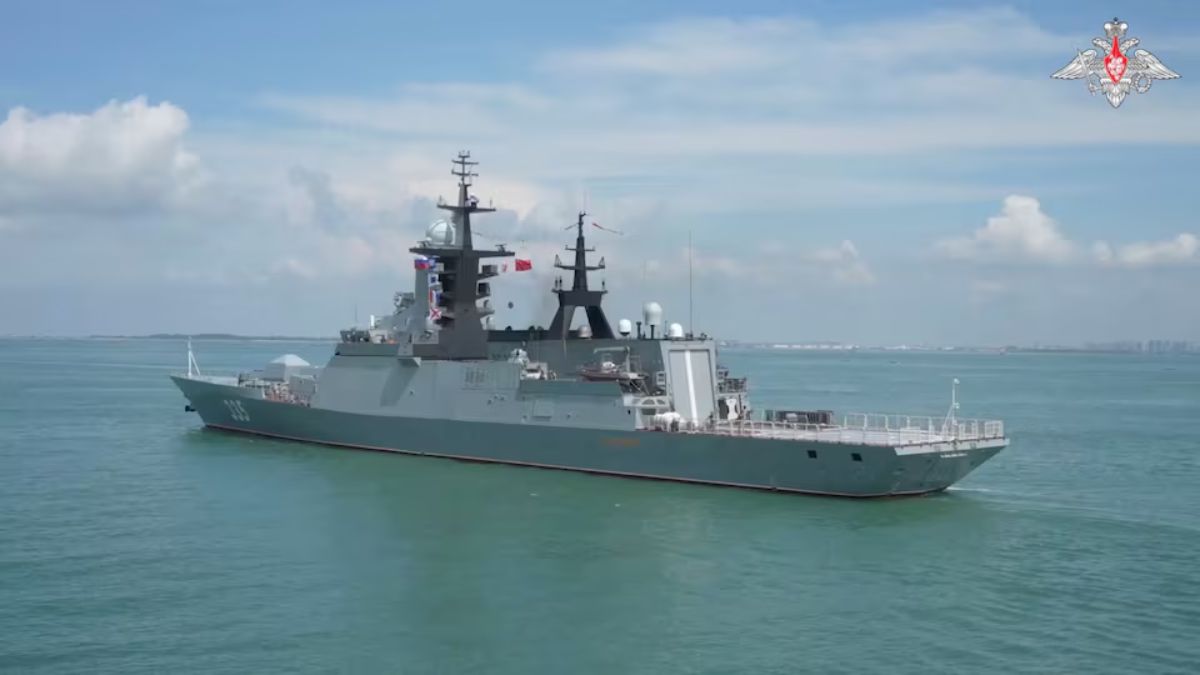The Chinese government mouthpiece Global Times quoted unnamed analysts suggesting that the RIMPAC exercise is evidently targeted at China, being the only country the US views as an “enemy” read more
)
China and Russia on Wednesday (July 17), began live-fire drills in the South China Sea. Reuters
China and Russia have begun live-fire maritime exercises in the South China Sea. This development comes as the two countries have increasingly aligned their military and economic strategies in response to a barrage of US sanctions.
The Russian-Chinese naval exercise, dubbed ‘Maritime Cooperation - 2024’, kicked off with an opening ceremony in the Chinese port of Zhanjiang. The Russian Defense Ministry confirmed the start of the drills via a statement on the Telegram messaging app. The exercises follow closely on the heels of a joint naval patrol in the north Pacific, which featured a detachment from Russia’s Pacific Fleet.
The timing of these drills is particularly significant, coinciding with the ongoing US-led Rim of the Pacific (RIMPAC) exercise—the largest maritime exercise in the world. This parallel activity seems to set the stage for a maritime face-off of sorts.
A face-off in the high seas?
The Chinese government mouthpiece Global Times quoted unnamed analysts suggesting that the RIMPAC exercise is evidently targeted at China. The analysts pointed to the exercise’s focus on sinking the USS Tarawa, a retired 40,000-ton amphibious assault ship. This is notable because China is the only “enemy” of the US that operates a similarly sized amphibious assault ship in the Asia-Pacific region. Some experts further speculated that the US and its allies might be preparing for a potential scenario where China could use such a ship in an assault on Taiwan.
RIMPAC, held biennially, this year gathers the armed forces of 29 countries for five weeks of training. The exercise aims to bolster multilateral relations and enhance readiness to support “a free and open Indo-Pacific.”
It is interesting to note that China, which participated in RIMPAC in 2014 and 2016, was disinvited in 2018 amid escalating regional tensions. It did not receive an invitation for this year’s event.
This year’s RIMPAC unfolds amid intensified regional frictions, as reported by Al Jazeera. The US has ramped up its multilateral interregional partnerships, forged new defense agreements, and expanded its military capabilities across the Asia-Pacific. Concurrently, China has heightened its military activities around Taiwan and engaged in repeated confrontations with the Philippines over contested islands and shoals in the South China Sea.
Russia, too, has upped its regional presence. In the past two months, President Vladimir Putin has made prominent visits to China, North Korea, and Vietnam, signaling a robust pivot towards Asia.
No official confirmation
As of now, there has been no official confirmation on whether China and Russia’s live-fire drills are explicitly intended as a counter to RIMPAC. When asked if the China-Russia exercise was a direct response to RIMPAC, Pentagon Press Secretary Maj. Gen. Pat Ryder remarked, “I’ll let them speak to the rationale behind their exercises. It’s of course something that we monitor closely, and we’ll continue to do.”
This face-off in the South China Sea underscores the broader geopolitical chess game playing out in the region, with major powers vying for strategic supremacy and influence.
With inputs from agencies

 2 months ago
38
2 months ago
38
)
)
)
)
)
)
)
)
)
)
)
)
)
)
)
)
)
)
)
)
)
)
)
)
)
 English (US) ·
English (US) ·